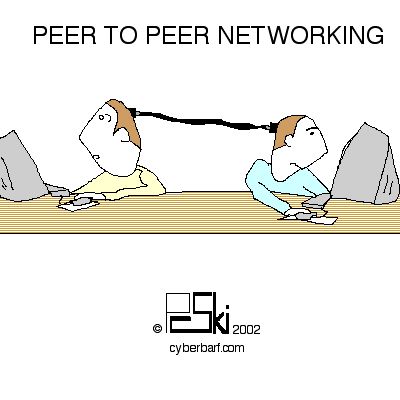cyberbarf
EXAMINE THE NET WAY OF LIFE
The Golden Spike
Opening the old stock portfolio after a long respite had the pain of rabid badgers gnawing the tender meat from under my exposed rib cage. You can feel the warm gush of blood leaving through the tearing teeth of a wild animal as each stock's performance is tracked to its current market value.
A sudden flash of the hysteria angst of the last true American manifest destiny, the transcontinental railroad. In the mid 1800s, the connecting of America's shores was a paramount concern for the Washington politicians and their quick-rich scheme operatives. The west was opening up to vast migration. A huge new market for Eastern manufactured goods. There was a need for a direct route to cross-market with Asian imports that began to land in San Francisco Bay. A railroad could go anywhere. It had to span the continent for America to keep itself from breaking at its Southern seems in the pre-civil War rhetoric.
The 1990s Internet boom had a similar appeal. But instead of the ending grand golden spike joining the nation, this golden spike was made of powdered sugar, and the train tressles were made of breaking graham cracker sticks, buckling under the weight of the grand stock illusion.
The net was the metaphor for change; translated into buzzspeak as wealth, greed, schemes, scams, stock manipulation, graft and fraud; the same erie consequences are buried under the dung piles of the transcontinental technology rush a century earlier. Ingrained into the early American psyche is the notion of opportunity can be seized to instant wealth, and the risk takers, like flies, are drawn to any dung pile in any time period. The whiz-bang technology is new, not understandable by the laymen, and in the hands of a clever, fast talking, promoter, money in his bank account.
U.S. history is quilted with the need for America to prove its “great” achievements. The upstart cast-offs from England revolted against the Great Power of their time for their freedom. The Revolutionary War was freedom from a King, but served to self promote to profit from complete free land ownership, the wealth generator in an agricultural society. The Lewis & Clark Expedition was one of exploration, but in reality it was survey of what were the new national resources that Eastern interests could exploit in the future. The Erie Canal was a great public works project, pushed through by New York merchants to get a reliable transportation system into the Midwest. The Indians sold to the white settlers the inhabitable glacial swampy portage bog that smelled of onions; but the pioneers saw the potential of the swampland for its location between the watersheds on Lake Michigan -- they built Chicago into a great American city.
Without the collar of history to bog down ideas or how things should be because that is the way it was, Americans were quick to adapt and rush ideas into inventions. The goal was to move people and goods as rapidly as possible as the international tide of immigration to the States exploded at the turn of the century. Railroads were the technology that could meet that goal. Operators started selling stock and laying down wooden ties all across the map, not for existing economic reasons, but because the average America was caught up in rail fever could be duped into investing in their hometown company. Most of the early railroads went bust quickly because they did not have a viable business. But the initial impact of the birth of the railroad permeated into the culture and transformed working class America. Before, the work day was sunrise, noon, and sunset where you stood at any time. Railroads created schedules; and schedules created time zones; and the concept of time divisions lead to other spatial organization of the new industrial worker.
The rail lines funneled grain and livestock to Chicago. Businessmen consolidated food production into assembly line butchering-- 150 men doing 150 small tasks on a steer, could disassemble and sort all of an animal's byproducts in 10 minutes. The organization of many men doing small tasks to achieve one end result was a revolutionary concept. Farmers raised their own livestock. They butchered one animal at a time. Farmers in an agricultural society had their own destiny in their own hands. They were dependent on their own skill and the nature's roulette wheel, the weather. The mechanism of the slaughterhouse took the role of the individual and put it into an assembly line. Craftsmen and individuals were replaced by tradesmen in factories. Blacksmiths to foundries turned into steel mills; wagon and coach coopers turned into automotive factories. It changed an agricultural society founded on the individualism and self-sufficiency traits into an industrial society of interchangeable and replaceable human parts in an assembly line factory. It set off the internal and bitter struggle between labor and capitalists who still argue today on the value of monetary and human capital in the production process. A generation eagerly accepted this change and abandoned their parents way of life; the rural communities had a steady stream of their youth migrating to the urban work centers for the promise steady work and more income than could be produced from the land.
The Internet boom could America at the same type of crossroads. The U.S. was turning from an industrial-manufacturing goods economy to a service based economy. Information, be it words, paper, analytical data or services, the intangible, became more important than creating and selling a tangible product. The web e-commerce model was the new railroad-- it would be the revolutionary key to change the methods of distributing information in America's dominant service economy.
What did the first railroads displace? The distribution channels of commerce were paths, trails, plank roads, and boats on narrow canals. What were the information channels of communication? Scribes, printers, typewriters, postal letters, telegraphs, overnight couriers, to fax machines. Now email and instant messaging can rapidly communicate faster than any other previous form of business commerce. A new generation eagerly accepted this change and abandoned their parents way of life; the industrial communities had a steady stream of their youth migrating to the silicon work centers for the promise steady work and more income than could be produced from the factory.
The transcontinental railroad was a race between two competitors who had a vested interest in claiming as much trackage miles as they could build before the two would companies would meet. Quick land grabs, short-cuts, financial gimmicks, speculative selling were more important and profitable to the executives than actually building the railroad itself. The same was true by the Internet entrepreneurs who quickly sold prospects on the vision of staking a huge chunk of Internet space, cornering the e-market for a good or service, building a server system and web software, floating massive stock issues and options, and waiting for the money to roll in. But there was no golden spike to bring things together in the end of the 1990s. The Internet was not built on the ground, but in thin air.
Old Time Illusions
“Pssssss . . .want to buy a Rolex for 50 bucks?” It is one thing for you to judge the character of the person selling the watch on the street. Your life experiences will quickly compile whether you can trust the sales pitch. But with the Internet, you can't judge the lines on a person's face because everyone is masked in the basic compiler of ones and zeros. We are slowly being tethered to a computer network. The familiarity of working on a computer breeds trust in the system. It is that trust that creates the illusion of security. The safe sense of security we used to have walking down Main Street USA.
Enron energy trading scandal tracks like other confidence games. It has been alleged that the energy trading rooms were merely props, like from the movie The Sting, where in house traders looked busy when visitors or investors came by to look at the operation. The operation of round trip trades, in house trades, fake trading volume, and fraudulent revenue numbers was for the purpose of generating increasing stock values, stock options and insider wealth as the general public poured more money into these new Internet business models. Fueled by the numbers, stock bulletin boards and Internet business publications touted these new wizard electronic networks which created the froth of the Internet stock market mania. It was really no different than robbers lurking in a dark alley waiting for a mark.
This dark side of the net stigma continues after the energy trader scandals collapsed the markets. Internet scams are growing at an alarming rate because it is easy to grift in cyberspace because there is no physical contact (and identification) when you rob the victim. Scams are as subtle as official looking email to change your web account or renew a registration/transfer fee, to the classic con of Nigerian businessmen looking for an escrow account to park a few million dollars for a large handling fee. People are being culled into buying more and more high ticket items, like used cars, sight unseen. Common sense states that if the deal seems too good is probably a bad scam. It is the illusion of instant wealth, easy money or a good deal that hooks the fish. For example, if you would not buy a used car in person, why do it animously on the net? For the average person, once you give up your credit ID to a stranger with criminal motivation, it is almost impossible to stop being burned. It may take years to unravel the damage done by the scammer.
Even if you transact commerce on the net with a reputable company, it storage of your personal information is at risk from hackers, credit card sweepers and misappropriation. Electronic banking is more common place than talking to a teller. The ease of getting cash from secured intranet machines is the hook. The criminals have even developed caps (dummy terminal) that fit over ATM machines that collect the debit card metallic strip information then claim the transaction could not get through to the corresponding bank. You think the server or network is down, and you walk away with no cash. The e-bandits come back later and walk away with all your personal access codes that they can recode into blank cards to use at a functioning ATM down the block.
More and more a person is being distilled down to a series of numbers and access codes. And those guarded codes can easily be exploited by modern day bank robbers who use computer terminals and programs instead of guns and bullets.
The solution is to guard your privacy as closely as you can. Stay off email lists. Don't open mail from someone you don't know. It is like the kindergarten old school basics we all learned: don't touch hot stove; look both ways before you cross the street. The only difference is that you can be blindsided even when you are off-line.
Forty German writers plan to write and publish a novel in 12 hours in April. The novel will be distributed by the Internet This sausage factory style of trying to instant publish a reliable work will show the power of the distribution channel but may fall flat on the creative channel. It is a good trend if the power of Net distribution for odd projects like this one.
iToon
Applebarf: Reaction
The new office iMacs have been getting their share of immediate reaction. The most important expression after “Wow” is that they take up a lot less space than other desktop computers. The flat screen display also intrigues the casual technophile. The crisp display also gets good reviews.
pindermedia.com
presents
The Real News
Real News Komix
Streetlife for
Your Mind
Distribution ©2001-2003 pindermedia.com, inc.
All Rights Reserved Worldwide.
Contact Information
Terms and Conditions
Trademarks
Archives
T-Shirts, Caps, Mugs. Check for Specials!








